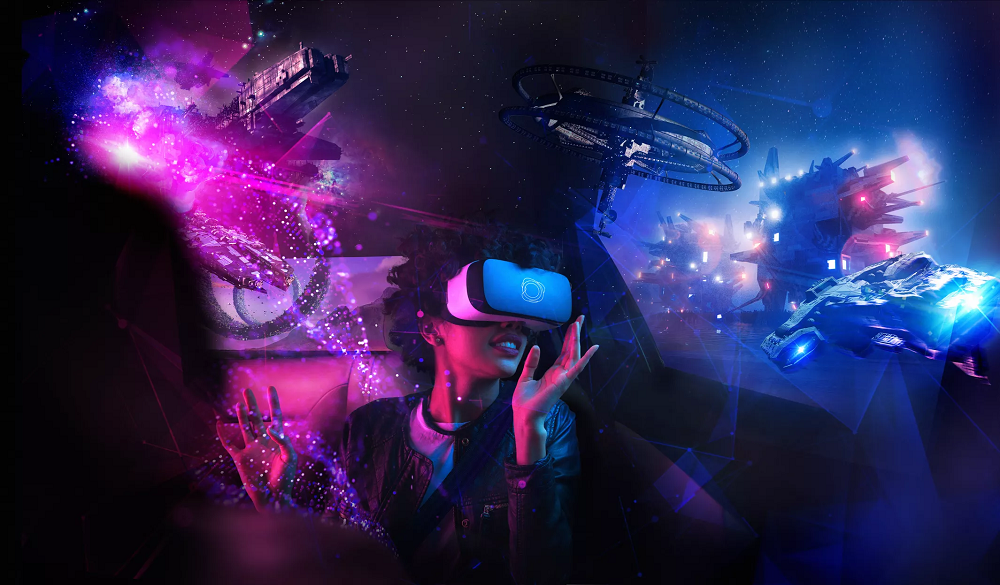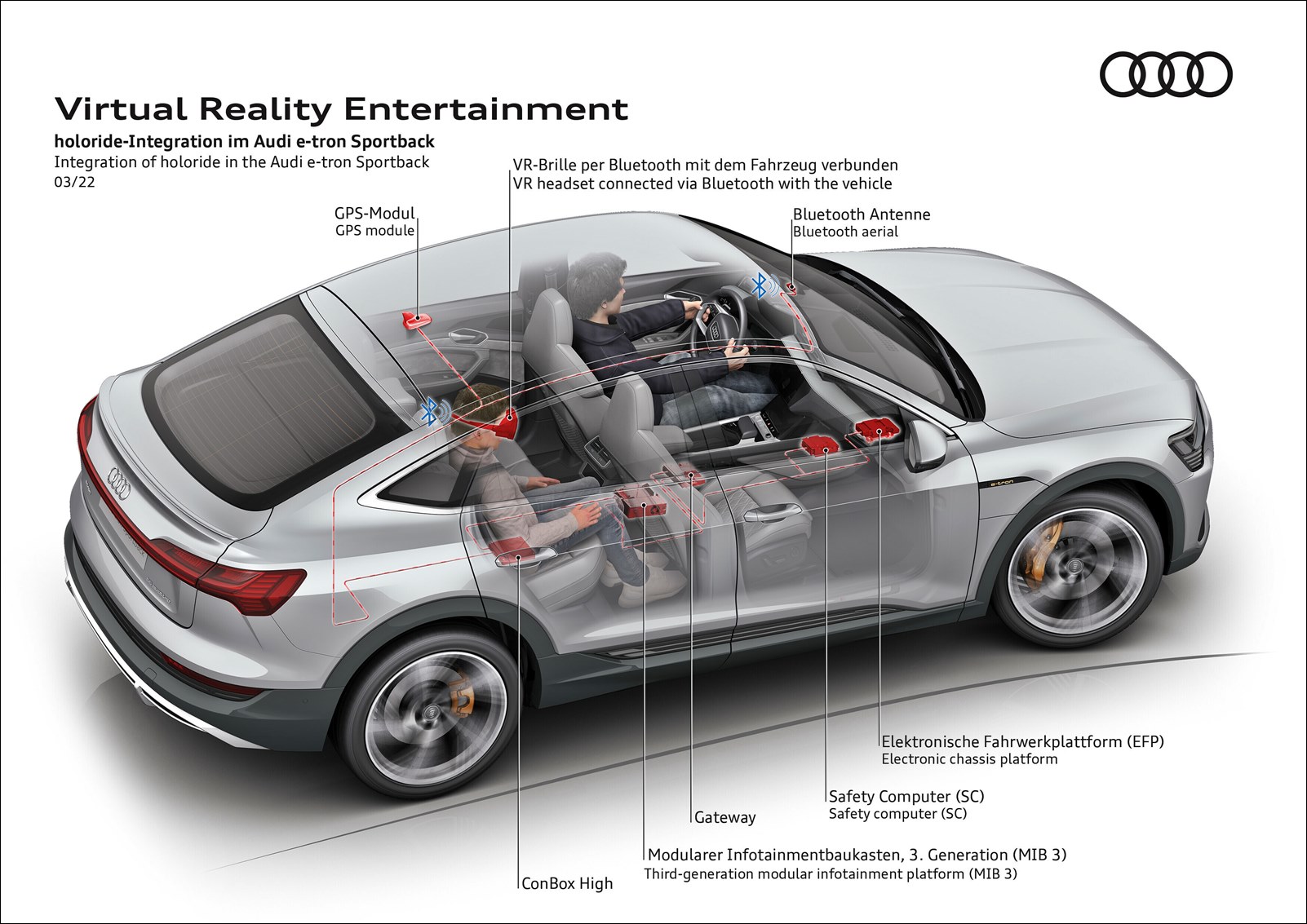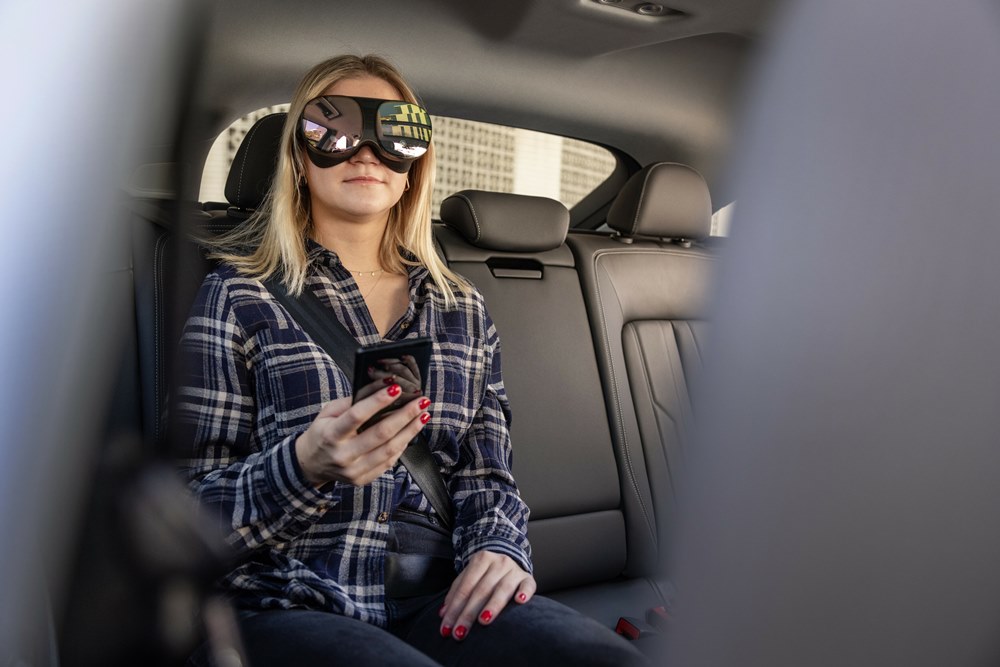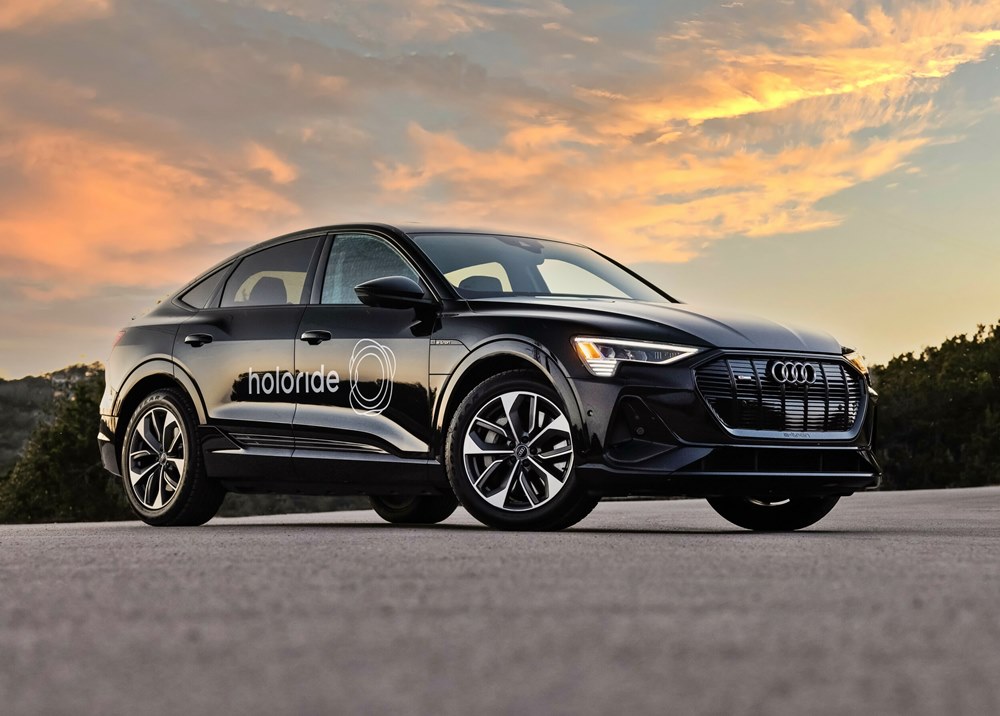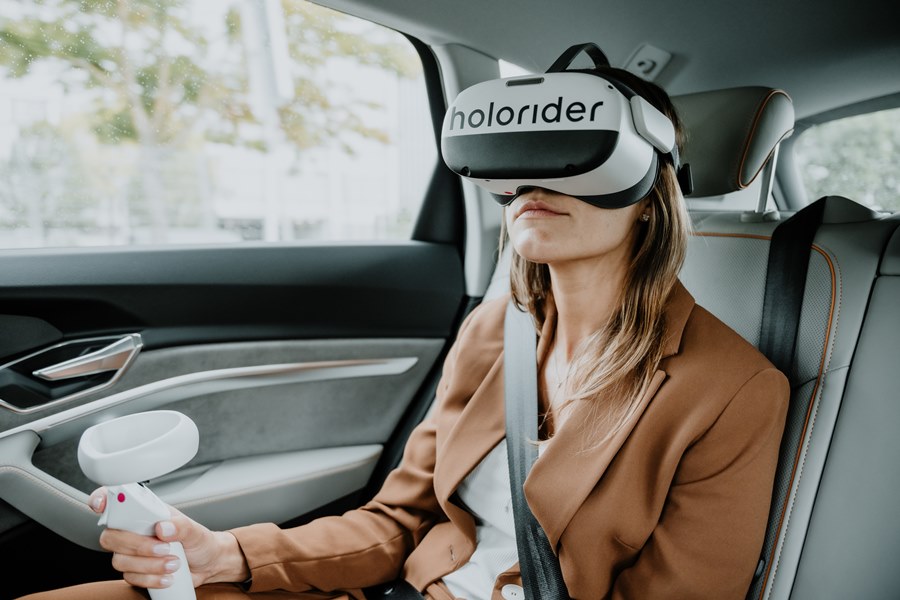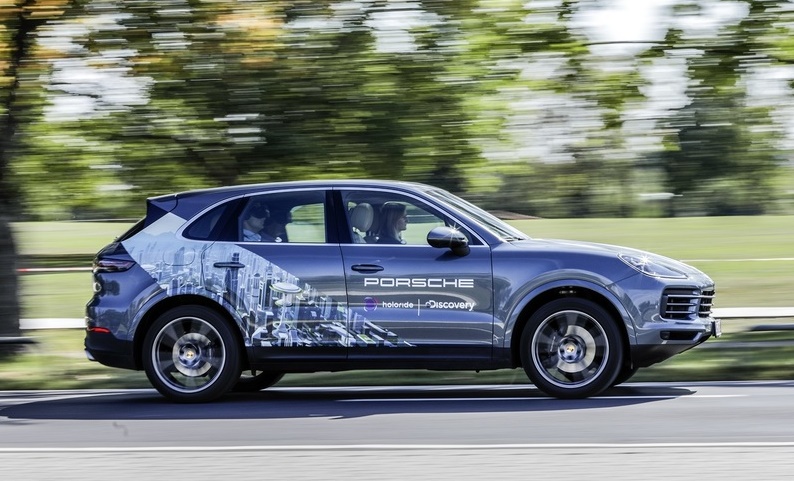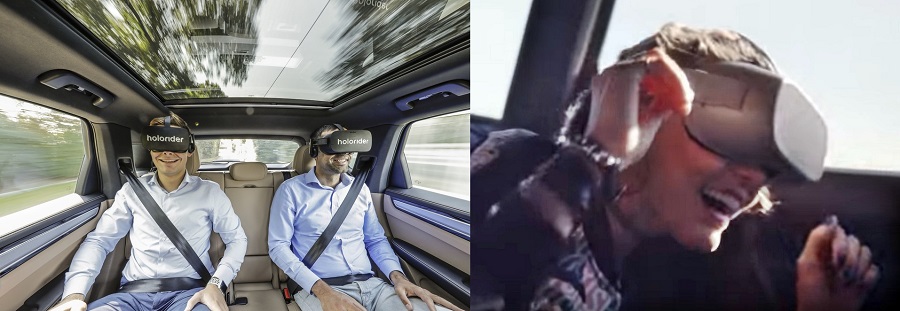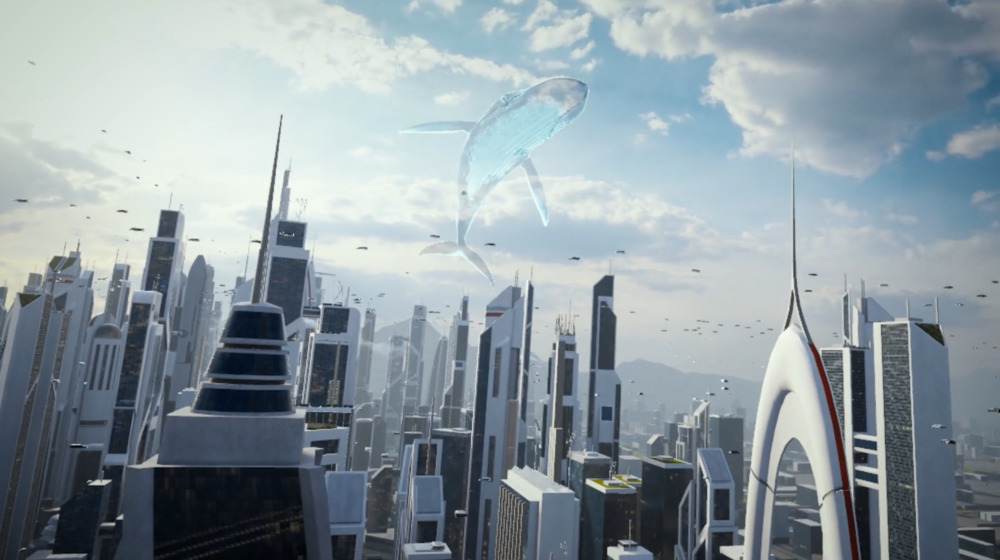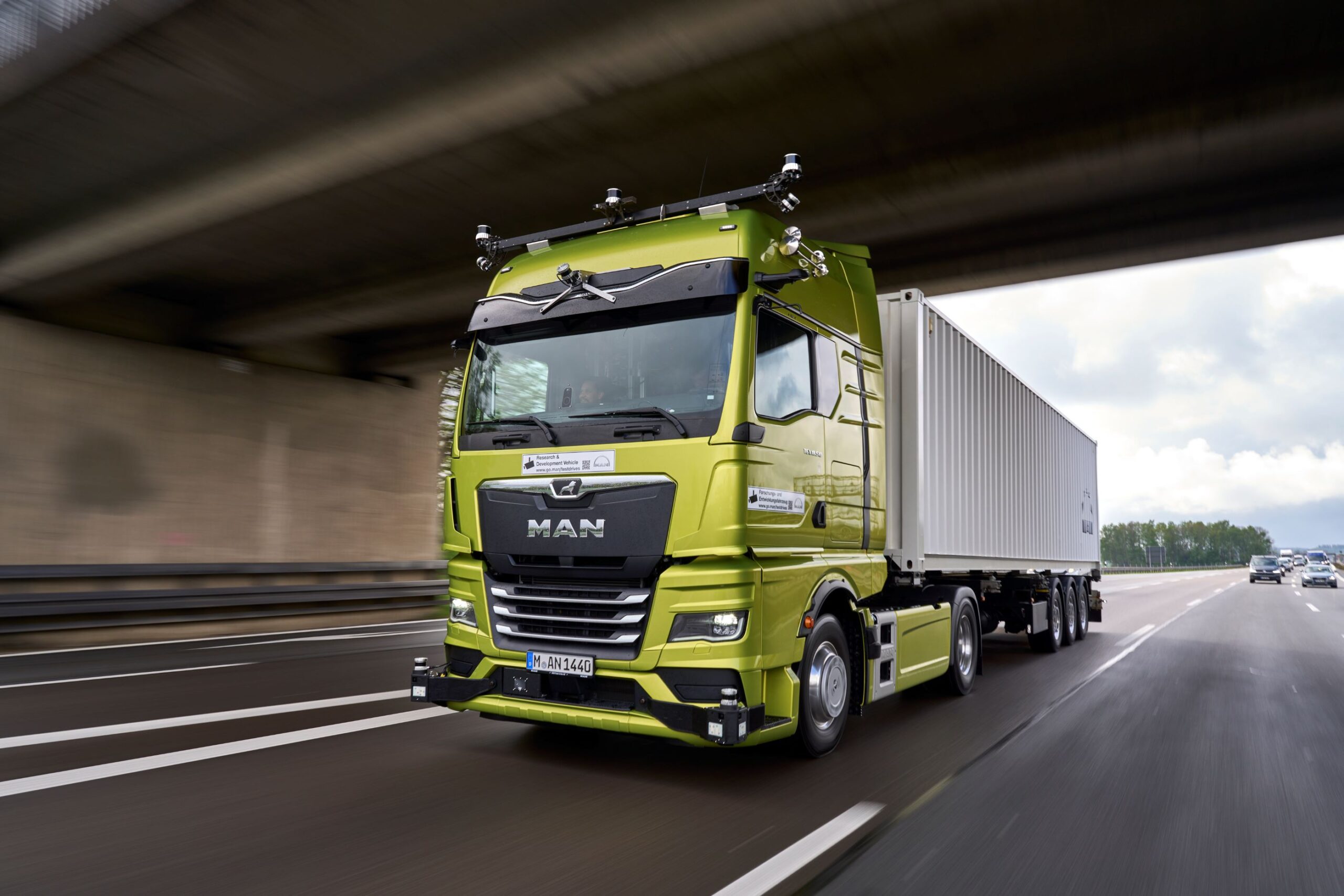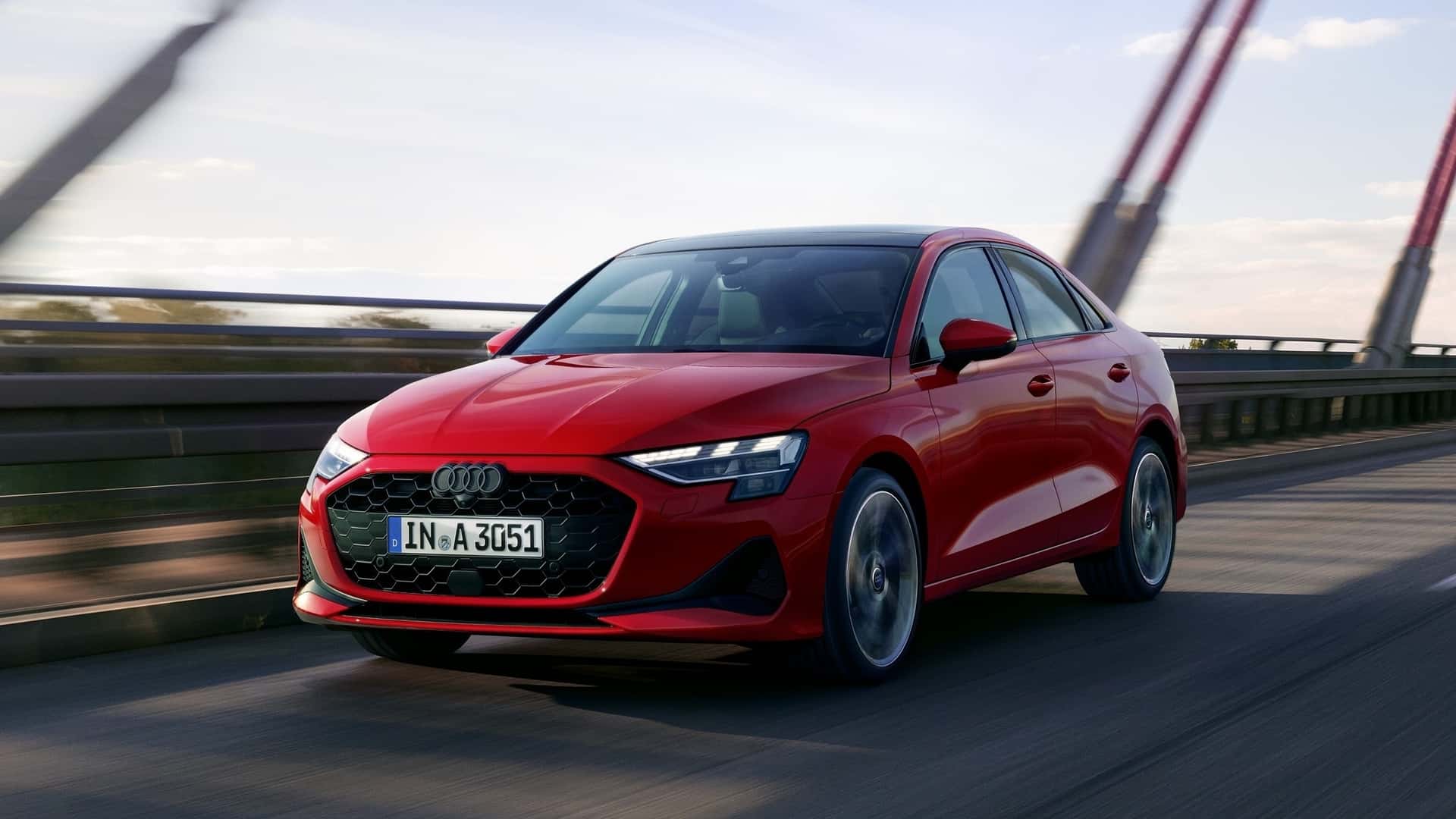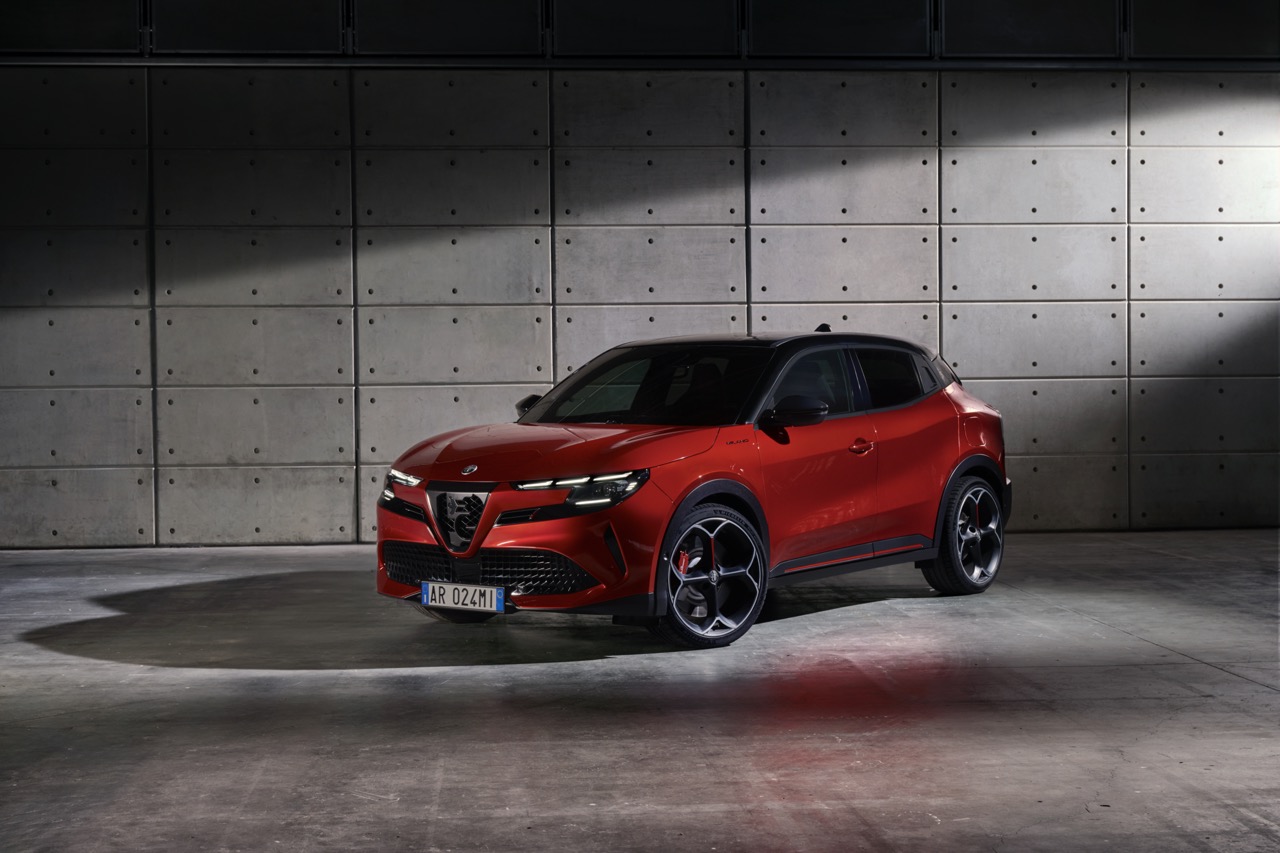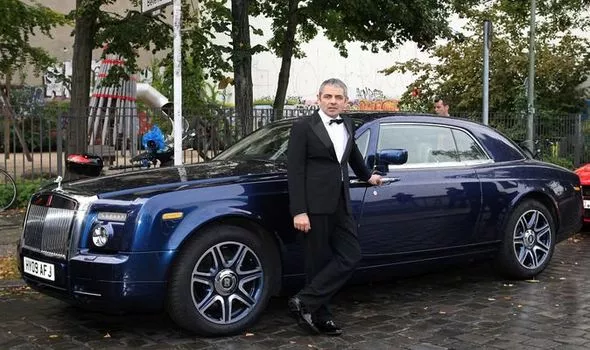Since the introduction of a radio in the car about 100 years ago, in-car entertainment or ICE has been evolving as new technologies were developed and then miniaturised and ruggedised for use in cars. Tape-players and CD-players allowed motorists to bring their own favourite music with them, and then with connectivity to portable devices, the capability expanded.
And then came digital displays that meant movies could also be viewed, and before long, being able to connect to the internet meant that a whole new world of entertainment became available inside the car. Whatever you can enjoy in your home can now also be enjoyed while travelling.
Moving into virtual reality
The next step in ICE is virtual-reality (VR) entertainment and Audi is the first carmaker in the world to enable passengers to immerse themselves in games, films and interactive content using holoride. They will enjoy this by using VR glasses which will make a car ride a multimodal gaming event.
The immersive experiences
The holoride technology adapts virtual content to the car’s driving movements in real-time. For example, if the car is taking a right turn, the spaceship in the imaginary world will also fly to the right. If the car accelerates, the spaceship speeds up too. Initiated by Audi, development of this innovative VR or XR (extended reality) technology is being advanced and commercialized for different manufacturers by the tech entertainment start-up.
With this approach, the 4-year old German start-up has established a completely new media category that they call ‘Elastic Content’ – content that adapts to driving movements, journey time and driving route. The result is immersive experiences with a previously unknown level of quality.
Holoride-capable Audi models
The models that will be holoride-capable with the third-generation modular infotainment toolkit (MIB 3) and the latest software cluster will be the A4, A5, A6, A7, A8, Audi Q5, Q7, Q8, e-tron and e-tron GT quattro. They will initially be available for the European and North American markets as well as Japan and China.
holoride was first presented at CES 2019 (the Consumer Electronics Show in Las Vegas), in cooperation with Disney Games and Interactive Experiences. It implemented a VR game experience from the Marvel Universe for cars. In addition to other activities and showcases, during a roadshow through California from Los Angeles to San Francisco in 2021, holoride visited other production and game studios to demonstrate the technology’s possibilities to potential partners.
In the future, the progressive automation of travel by car will not only make new forms of entertainment possible while driving but will also open up increased opportunities to learn and work on the road. When drivers also no longer have to concentrate on driving in the future, they can turn their attention to other things – work, reading, watching films, or gaming. The motion-synchronized voyage through virtual worlds with holoride also reduces the common phenomenon of motion sickness often experienced by passengers reading a book or enjoying audio-visual media on electronic devices such as tablets.
For users, the interior will become their personal free space, and for designers, it will become the new design centre. After all, the design process begins with the question: who will be sitting in a new model and what will people want to do there? In the future, designers will no longer design cars from the outside in, but from the inside out – and therefore customers will literally become the centre of attention.
VR technology enhances vehicle development processes for Hyundai and Kia


